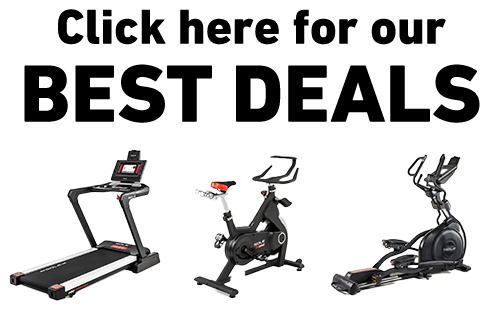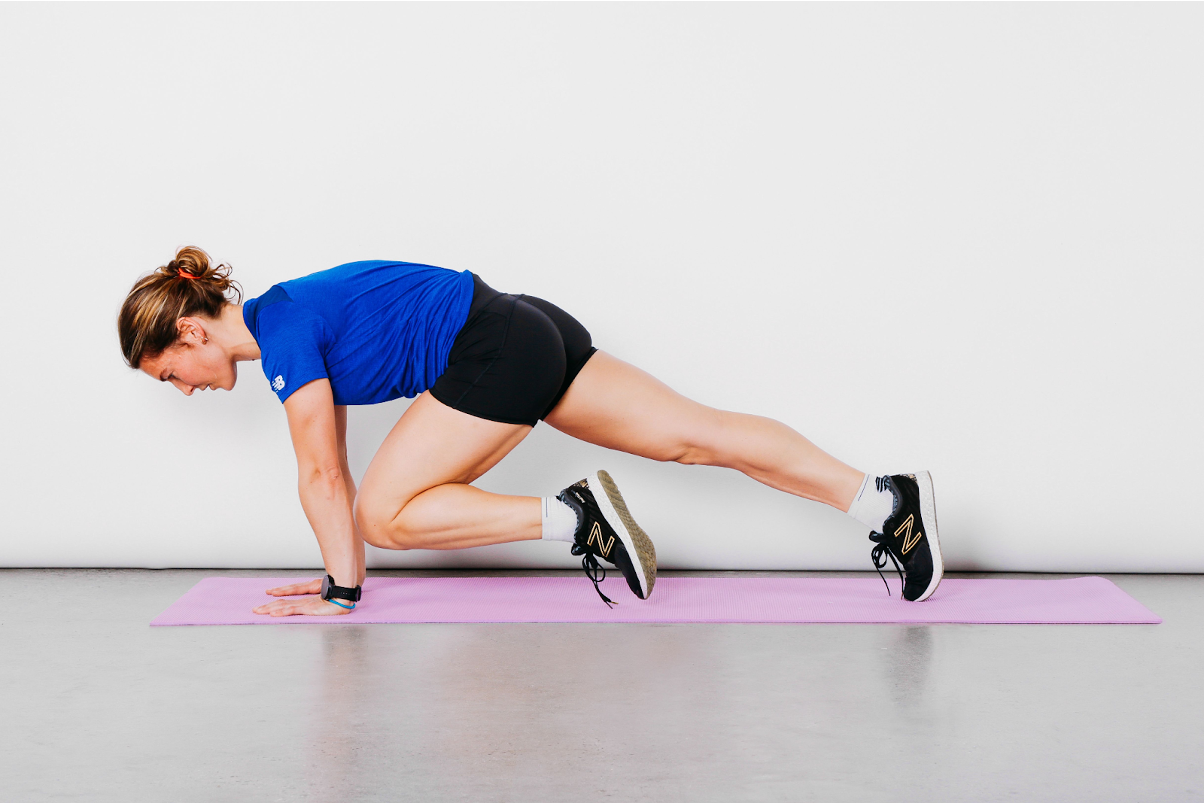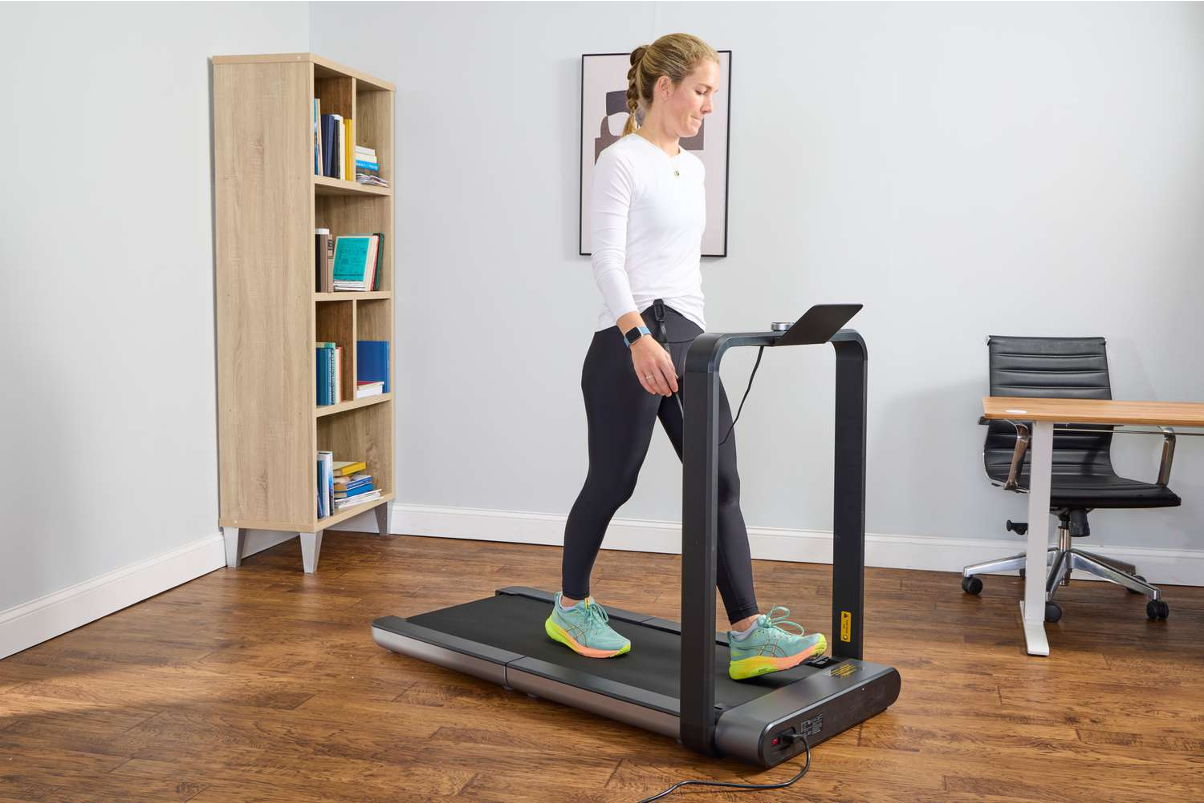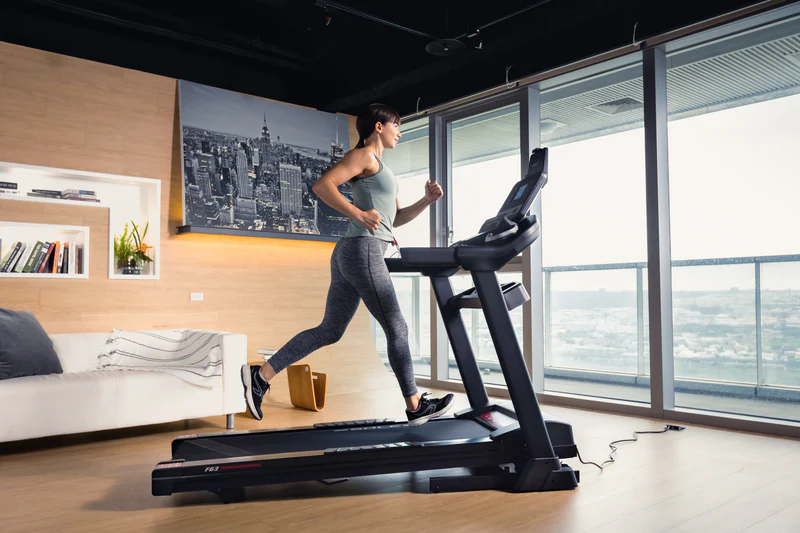Key Takeaways
- Mountain climbers provide runners with a full-body workout that strengthens core muscles critical for maintaining proper running form.
- This exercise improves hip mobility and cardiovascular endurance without the impact stress of additional running miles.
- Mountain climbers target key running muscles including hip flexors, hamstrings, and quadriceps.
- Just 2–3 minutes before running can activate crucial muscle groups and improve running economy.
- SOLE treadmills and equipment mat create the perfect foundation for runners, combining mountain climbers with their training. Just warm up on the treadmill, then hit the mat for core-strengthening mountain climber circuits.
Mountain Climbers: The Perfect Cross-Training Exercise Runners Are Missing
If you struggle with running form fatigue during the later miles of your run, mountain climbers could be your solution. This exercise combines cardio intensity with strength training in a single movement. That's the efficiency runners crave.
The beauty of mountain climbers lies in their simplicity. They require zero equipment while working multiple muscle groups that directly support running performance.
Unlike isolated exercises like crunches or leg lifts, mountain climbers train your body in a functional pattern that closely resembles running mechanics. This specificity principle explains why so many elite coaches add them to training programs for runners at all levels.
What Makes Mountain Climbers Ideal for Runners
The continuous alternating knee drive works your hip flexors while your core stabilizes to maintain proper positioning. This trains those muscles to support your spine during long runs. The combination of dynamic movement and static stabilization perfectly mirrors the demands of efficient running.
The exercise also elevates heart rate quickly, creating a cardiovascular training effect without adding impact to your weekly mileage. For runners concerned about overtraining injuries, mountain climbers offer intelligent cross-training that complements rather than competes with your running schedule.
Additionally, the coordination required between upper and lower body trains your neuromuscular system to maintain rhythm and balance, qualities that translate directly to smoother running form when fatigue sets in.
|
At SOLE, we're proud to offer top-quality exercise equipment designed for home and gym use. Our machines are built to meet the highest standards of durability and performance, making them ideal for fitness enthusiasts at any level. SOLE Products
|
5 Science-Backed Benefits for Runners
Mountain climbers offer a unique advantage by combining multiple training benefits into one time-efficient exercise. (Image courtesy of Mint)
1. Builds Core Strength for Better Running Form
Research has found that runners with greater core stability maintain better form during running and have reduced risk of developing "runner's knee".
Mountain climbers target the transverse abdominis, obliques, and lower back muscles that prevent excessive rotation and maintain proper pelvic positioning while running. A strong core serves as the foundation for efficient running mechanics.
2. Improves Hip Mobility and Flexibility
Mountain climbers promote active hip flexion and extension through a functional range of motion. Better hip mobility correlates with increased stride length and reduced injury risk in distance runners.
Regular practice helps maintain hip flexor flexibility while strengthening these muscles, creating the crucial balance of mobility and stability runners need.
3. Increases Cardiovascular Endurance Without Impact
High-intensity mountain climbers elevate heart rate into training zones comparable to tempo running without joint stress.
Some studies found that runners who added high-intensity interval training showed similar VO2 max improvements to those who increased mileage, but with significantly less impact-related discomfort.
This makes mountain climbers valuable during recovery weeks or when managing minor injuries.
4. Strengthens Running-Specific Muscles
Beyond core and hip flexors, mountain climbers engage quadriceps, hamstrings, and glutes— the primary movers in your running stride.
The exercise closely mimics neural patterns used during running through "movement pattern specificity," meaning strength gains transfer more directly to running performance than isolated exercises.
Mountain climbers train muscular endurance rather than maximal strength, matching running's demands for repeated contractions over extended periods.
5. Enhances Overall Athletic Performance
Mountain climbers develop coordination, balance, and proprioception that help runners navigate technical terrain and maintain efficiency when fatigued.
The upper body engagement addresses an area many runners neglect, yet research shows proper arm drive and shoulder strength contribute significantly to running performance, especially during uphill sections or finishing sprints.
Master the Perfect Mountain Climber Form
Begin in a high plank position with wrists directly under shoulders, body forming a straight line from head to heels. Engage your core and pull shoulders down away from ears. (Image courtesy of My Protein)
Common Form Mistakes to Avoid
The most frequent error is allowing hips to rise too high, which reduces core engagement and negates running-specific benefits. Another mistake is letting shoulders creep up toward ears, creating unnecessary tension.
Watch for excessive bouncing or loud foot noise; movements should be controlled and precise. If your feet are thumping the ground, you're using momentum rather than muscle control.
How to Add Mountain Climbers to Your Running Program
Pre-Run Activation
Use mountain climbers as a dynamic warm-up to activate running muscles. Perform 2–3 sets of 20–30 seconds at moderate pace after initial warm-up but before running.
Research shows that dynamic activation exercises improve running economy in early miles compared to static stretching alone.
Post-Run Strength Builder
Add mountain climbers after easy runs to take advantage of warmed muscles. Perform 3–4 sets starting with 30 seconds and progressing to 60 seconds as fitness improves.
This approach works well for runners who struggle to find time for separate strength sessions. The best part is that the entire routine takes under 10 minutes!
Cross-Training Day Workout
On non-running days, mountain climbers can anchor comprehensive cross-training workouts.
Mix them into circuits with squats, lunges, and push-ups to maintain cardiovascular fitness while giving running-specific muscles a break from impact stress.
3 Ready-to-Use Workout Routines
Strategic implementation of mountain climbers can enhance your running without interfering with your primary training goals. (Image courtesy of fantast)
5-Minute Quick Core Blast
Perform 30 seconds of standard mountain climbers, rest 10 seconds, then 30 seconds of a variation. Repeat for 5 total minutes. This minimal time investment works perfectly post-run three times weekly or as standalone sessions on light days.
15-Minute Runner's Strength Circuit
Complete three rounds of: mountain climbers (45 seconds), bodyweight squats (45 seconds), reverse lunges (45 seconds), push-ups (45 seconds), glute bridges (45 seconds), with 15 seconds rest between exercises. This addresses total-body strength needs without excessive muscle soreness.
30-Minute Complete Cross-Training
Begin with 5 minutes of light cardio, then perform twice: 60 seconds each of mountain climbers, jump squats, plank, lateral lunges, and burpees. Rest 60 seconds between exercises and 2 minutes between circuits. Finish with 5 minutes of core work and 5 minutes of mobility.
Improve Your Running Performance with SOLE's Cross-Training Setup
SOLE equipment transforms your running routine by providing the perfect platform for both your miles and the cross-training exercises that make those miles stronger and more efficient.
Smart runners know that becoming faster isn't just about logging more miles, it's about training smarter. SOLE equipment creates the ideal ecosystem for combining running with mountain climbers and other cross-training exercises.
Start with a proper warm-up on SOLE treadmills like the TT8, F63, F89, or F80 treadmill. The Cushion Flex Whisper Deck technology reduces impact by 40%, preserving your joints for the work ahead. After a 5–10 minute easy jog to activate your muscles, you're primed for mountain climber activation drills.
The SOLE Equipment Mat becomes your mountain climber command center. At 36.5" x 78", it provides ample space for explosive movements while the non-slip surface keeps you stable during rapid knee drives. The cushioning protects your wrists during extended sets. This is crucial when you're building up to those 60-second intervals that really challenge your running muscles.
For runners incorporating mountain climbers into strength circuits, the SOLE SRVO All-in-One Trainer adds another dimension. Its resistance training capabilities complement bodyweight exercises perfectly, allowing you to create comprehensive cross-training sessions that address all aspects of running fitness in one efficient workout.
The SOLE+ app includes runner-specific workouts that strategically incorporate mountain climbers. You'll learn optimal timing, whether as pre-run activation, post-run strength work, or dedicated cross-training sessions. The app's guidance ensures you're getting maximum benefit without interfering with your primary running goals.
Ready to become a stronger, more efficient runner? Check out SOLE fitness equipment now!
Frequently Asked Questions (FAQ)
How many mountain climbers should runners do per workout?
Beginners should start with 3 sets of 30 seconds with equal rest periods. Intermediate runners can aim for 4–6 sets of 45 seconds, while advanced athletes might perform up to 8 sets of 60 seconds during dedicated sessions.
For pre-run activation, keep volume low at 1–2 minutes total. Focus on quality over quantity because excessive volume can create unnecessary fatigue impacting running performance.
Can mountain climbers help prevent runner's knee?
Yes, mountain climbers strengthen the quadriceps, particularly the vastus medialis oblique (VMO) which helps maintain proper patellar tracking. The core stability developed improves overall biomechanics, reducing compensatory movements that contribute to knee pain.
Will mountain climbers make me faster?
Mountain climbers improve running economy by helping maintain proper form during fatigue and reducing energy waste through excessive movement.
While they won't replace speed workouts, they create the strength foundation for benefiting from running-specific training.
Should I do mountain climbers on rest days?
Light sessions at moderate intensity for 1–2 minutes can work on active recovery days, but avoid high-intensity or high-volume sessions that impair recovery.
Skip them entirely on complete rest days following intense training or races.
How can SOLE equipment enhance my mountain climber training as a runner?
SOLE equipment creates a runner's performance lab right in your home. Here's the game plan: use a SOLE treadmill for your primary running workouts. Then transition to the SOLE Equipment Mat for mountain climber circuits.
On cross-training days, combine treadmill intervals with mountain climber circuits for a killer cardio session that won't add impact stress.




Leave a comment
This site is protected by hCaptcha and the hCaptcha Privacy Policy and Terms of Service apply.